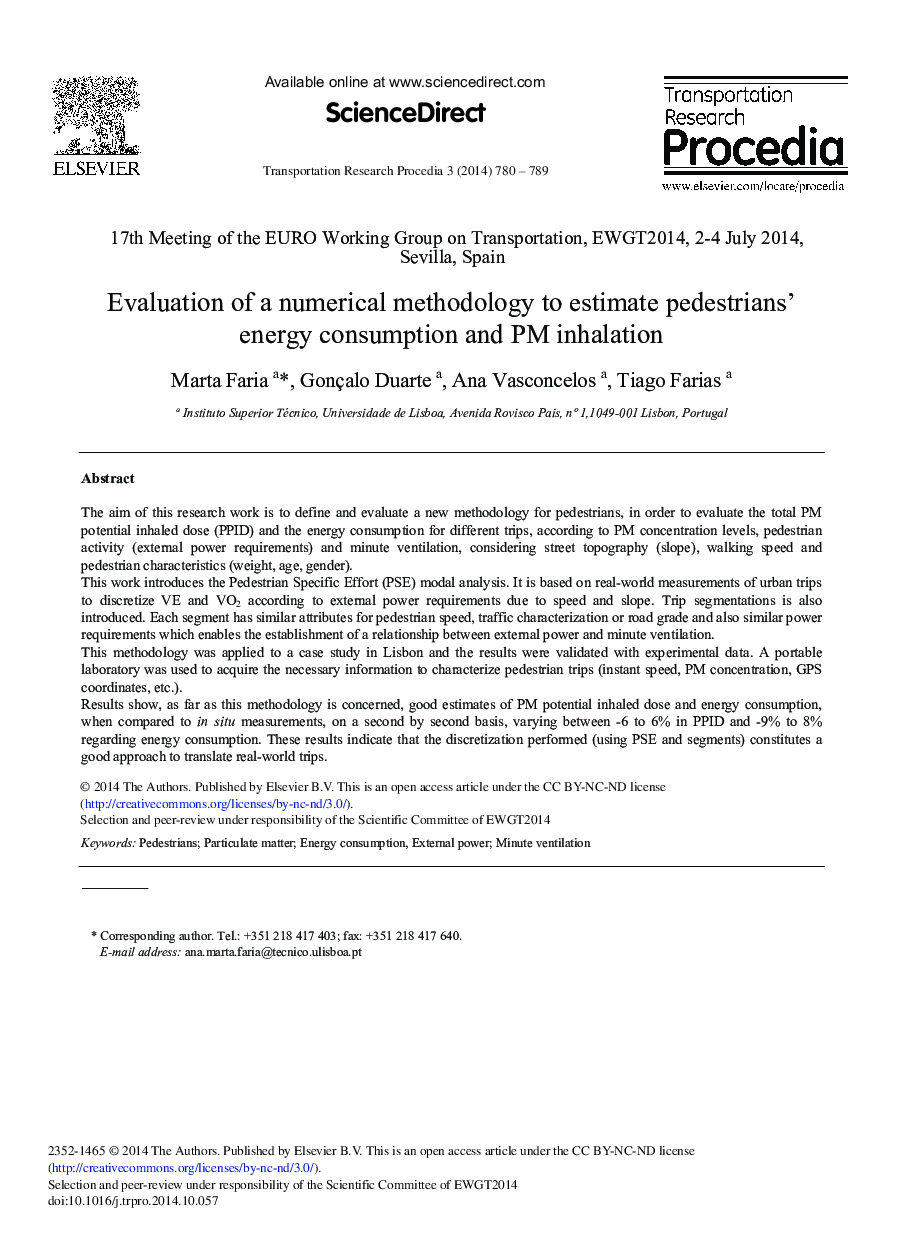| کد مقاله | کد نشریه | سال انتشار | مقاله انگلیسی | نسخه تمام متن |
|---|---|---|---|---|
| 1106458 | 1488292 | 2014 | 10 صفحه PDF | دانلود رایگان |

The aim of this research work is to define and evaluate a new methodology for pedestrians, in order to evaluate the total PM potential inhaled dose (PPID) and the energy consumption for different trips, according to PM concentration levels, pedestrian activity (external power requirements) and minute ventilation, considering street topography (slope), walking speed and pedestrian characteristics (weight, age, gender).This work introduces the Pedestrian Specific Effort (PSE) modal analysis. It is based on real-world measurements of urban trips to discretize VE and VO2 according to external power requirements due to speed and slope. Trip segmentations is also introduced. Each segment has similar attributes for pedestrian speed, traffic characterization or road grade and also similar power requirements which enables the establishment of a relationship between external power and minute ventilation.This methodology was applied to a case study in Lisbon and the results were validated with experimental data. A portable laboratory was used to acquire the necessary information to characterize pedestrian trips (instant speed, PM concentration, GPS coordinates, etc.).Results show, as far as this methodology is concerned, good estimates of PM potential inhaled dose and energy consumption, when compared to in situ measurements, on a second by second basis, varying between -6 to 6% in PPID and -9% to 8% regarding energy consumption. These results indicate that the discretization performed (using PSE and segments) constitutes a good approach to translate real-world trips.
Journal: Transportation Research Procedia - Volume 3, 2014, Pages 780-789